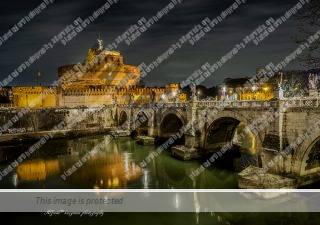The eternal city, crossroads of all roads.
It is said that all roads lead to Rome and sooner or later even one of your roads will pass through the eternal city.
Italian version 🇮🇹 Here
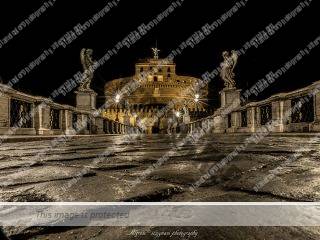
Rome could create endless lists of places to visit. Wherever you look, there will be something interesting to see or visit. Whether you are there for the first time or not, Rome will always amaze you with new hidden corners to visit. Capital of Italy but above all one of the most famous and visited cities in Europe, about three thousand years ago it was the first metropolis in the history of humanity. The nerve center of the major civilizations, it influenced society, culture and history for centuries to come, dominating Europe, North Africa and the Middle East. Walking through its streets means reliving the times of the Roman Empire, it is continually diving back in time, in the grandeur of one of the most influential cities in the history of humanity. Its historic center classified as a UNESCO World Heritage Site, houses monuments such as the Colosseum, the Roman Forum, the Capitol, the aqueducts, but also the most important place of Catholicism, the Vatican City: an independent state within the city. Capital of the Catholic Church for almost 2000 years, Rome has a large number of churches, each of which holds wonderful works of art and architecture, testimony of the greatest artists in history. But the eternal city is also famous for the charm and beauty of its numerous squares, and of the countless fountains scattered everywhere. These include the beautiful Piazza Navona with the Bernini Fountain, the Spanish Steps with the Barcaccia and the beautiful staircase of Trinità dei Monti, the wonderful Trevi Fountain.
St. Peter’s Square
The most interesting way to reach St. Peter’s Square is to get there from Via della Conciliazione. Certainly among the most famous squares in the world and also one of the most beautiful. With its 320 meters in length and 240 meters in width, it can accommodate more than 300,000 people during major events. Erected between 1656 and 1667 under Bernini’s direction, it was commissioned by Pope Alexander VII. With its 284 columns arranged on four rows, the colonnade wraps the square as if they were two arms. In the center of the square an obelisk and two fountains, one by Bernini and the other by Maderno. The 25m high obelisk was brought to Rome from Egypt in 1586.
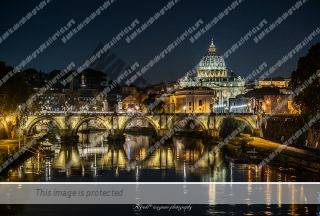
St. Peter’s Basilica is one of the most beautiful and famous churches in the world. Its construction began in 1506 and it took 120 years for the church to be consecrated. Nowadays with 187 meters in length and its 133 meters high dome, San Pietro remains one of the largest churches in the world.
Colosseum, Roman Forum and Palatine Hill
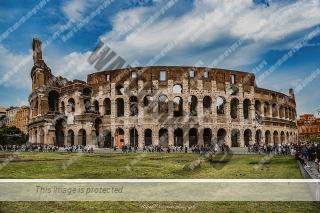
You cannot have visited Rome if you have not gone to see the Colosseum. Symbol of the city, the Flavian Amphitheater was the place of fierce and bloody shows that entertained the inhabitants of the ancient Roman empire. Essential place in visiting the city, it is one of the most visited archaeological sites in the world.
The Roman Forums were the political and social center of ancient Rome for several years. Over the years, numerous monuments were built which served to carry out public, social and religious life. Later the most important courts and the Senate took their places.
The Palatine Hill is one of the seven hills of Rome and the place where Rome took shape. It is here that according to legend, Romulus and Remus were suckled by the she-wolf in a cave. Raised later by a family of shepherds, Romulus became an adult and decided to found a new city and chose the Palatine hill as a place. The house is identified in a hut called Casa Romuli.
To visit the complex, the advice is to buy tickets at the forum ticket office and not at the Colosseum. The entrance is joint for the three places and starting the visit through the Forums or the Palatine one avoids having to queue again for the entrance to the Colosseum.
Piazza di Spagna
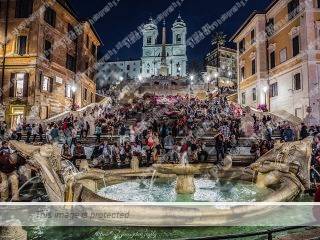
Piazza di Spagna is one of the most popular places in the city. With the famous 18th century staircase that connects the square and the church of Trinità dei Monti, it owes its name to the seat of the Spanish embassy founded in the 17th century. The Barcaccia fountain located at the foot of the staircase was sculpted by Pietro Bernini for Pope Urban III. Its construction was completed in 1627 by his son, Gian Lorenzo Bernini.
Sant’Angelo castel
Sant’Angelo castel located on the right bank of the Tiber near the Vatican, was originally a mausoleum for Roman emperors. In 1277 to protect the Pope in case of danger, a long fortified corridor was built that connects the castle to Vatican City. During the terrible plunder of the event in Rome in 1527, Pope Clement VII used this fortress as a refuge. Today the castle is a museum that offers visitors the sight of still perfectly preserved Renaissance frescoes and vast collections of weapons.
The Pantheon
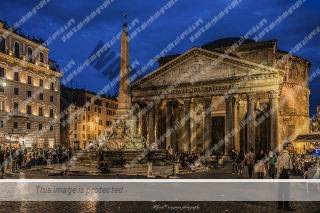
Through small cobbled streets with the famous San Pietrini, we continue to the Pantheon. Built as a temple of all gods, at the beginning of the seventh century it was converted into a Christian basilica. Its dome is larger than that of St. Peter’s Basilica. In the center, an oculus of 8.92 meters in diameter illuminates the entire building. The first building was by Agrippa’s will, but destroyed by fire it was restored first by Domitian, and then by Trajan. The imposing portico at the entrance supported by wonderful granite columns bears the original inscription of Agrippa which says: Marco Agrippa, son of Lucius, consul for the third time, had it built.
Piazza Navona
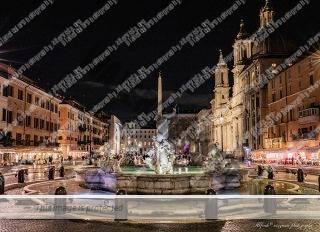
Located in the historic heart of the city, near the Pantheon, Piazza Navona is one of the most famous squares in Rome. Built on the site of the old Roman stadium of Domitian, the square was to celebrate the greatness of the Pamphili family of which Pope Innocent X descended. The same ordered its renewal by ordering that the square be adorned with high-value works. Piazza Navona thus becomes the symbol of Baroque Rome. At the center of the square is the Fountain of the Four Rivers, built by Bernini. The four statues that make it up represent the four most important rivers of the time: the Nile, the Danube, the Ganges and the Rio de la Plata. In the southern part there is the Fontana del Moro was sculpted by Giacomo della Porta and retouched by Bernini, who added the dolphins. In the northern area instead, the Fountain of Neptune which like that of the Moro was brought to an end by Gregorio Zappalà and Antonio Della Bitta.
The historical and cultural heritage of Rome is unparalleled, centuries of history mingle with the everyday life of our time. With the world’s highest concentration of architectural and archaeological works, it is the largest and only wonderful open-air museum in the world.
A praise is due to his friend Alfredo Ciccognani who kindly made his photos available for the writing of this article.
Photographer: Alfredo Ciccognani
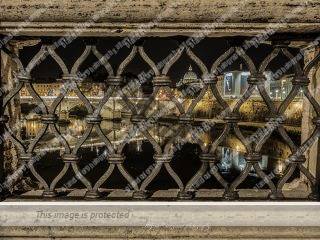
Remember to share this article with your friends on social media.
If you want to stay updated on everything that happens on planetcolorphotography.altervista.org
Join the facebook group Planet Color Photography.

